Crafting text that feels human and authentic is a priority for many writers, marketers, and professionals. With tools like ChatGPT, achieving this has become easier than ever. The ChatGPT humanize text prompt feature allows users to generate AI-written content that is not only accurate but also mirrors a human-like tone, ensuring it resonates with readers.
This guide will explore the nuances of using ChatGPT prompts to humanize text, offering practical tips, benefits, and examples to help you master this skill.
What is a ChatGPT Humanize Text Prompt?
A ChatGPT humanize text prompt is a specific instruction or input that directs ChatGPT to produce content that feels natural and conversational. By carefully crafting these prompts, users can guide the AI to generate text that is engaging, relatable, and aligned with their desired tone or style.
Why Humanizing AI-Generated Text is Important
AI-generated content is undoubtedly useful, but it can sometimes come across as robotic or impersonal. Here’s why humanizing text is essential:
Reader Engagement: Human-like text keeps readers interested and invested in the content.
Credibility: Natural language builds trust with the audience.
SEO Benefits: Search engines prioritize content that meets user intent and feels authentic.
Brand Voice: Personalized text aligns better with your brand identity.
How to Create Effective ChatGPT Humanize Text Prompts

Crafting the perfect prompt is an art. Follow these tips to get the most out of ChatGPT:
Be Specific
Provide clear and concise instructions. For example, instead of saying, “Write a paragraph,” try, “Write a friendly introduction about the benefits of AI in education.”
Define the Tone
Specify the tone you want, such as conversational, professional, or humorous. For instance, “Explain climate change in a conversational tone suitable for a high school audience.”
Use Examples
Include examples of the style you’re aiming for. This helps the AI understand your expectations.
Adjust Prompt Length
Longer prompts often yield better results as they provide more context. For example:
“Write a blog post introduction about ChatGPT, focusing on how it helps users humanize text. Use a friendly and engaging tone with relatable examples.”
Request Revisions
Don’t hesitate to tweak the results by asking ChatGPT to refine or rewrite the content to better match your requirements.
Examples of ChatGPT Humanize Text Prompts
Here are some practical examples of prompts you can use:
“Explain the benefits of using ChatGPT for customer service in a friendly and conversational tone.”
“Rewrite this paragraph to sound more natural and engaging: [Insert Text].”
“Create a dialogue between two friends discussing the advantages of AI tools for small businesses.”
“Write a persuasive email promoting a product, focusing on emotional appeal and a personal touch.”
Benefits of ChatGPT Humanize Text Prompt

Versatility: Adapt the tone and style to suit any context, from academic papers to social media posts.
Efficiency: Save time by generating content quickly without sacrificing quality.
Accessibility: Make complex topics easy to understand by simplifying language.
Customization: Tailor text to align with your unique voice or brand identity.
Common Mistakes to Avoid When Using ChatGPT
While ChatGPT is a powerful tool, there are some pitfalls to watch out for:
Overloading the Prompt: Too much information can confuse the AI, leading to less focused results.
Ignoring Edits: Always review and refine the AI-generated content to ensure accuracy and alignment with your goals.
Lack of Specificity: Vague prompts result in generic output. Provide clear instructions.
How ChatGPT Helps Humanize Text for Different Use Cases
Academic Writing
Students and educators can use ChatGPT to simplify complex ideas or rewrite text to be more approachable while retaining academic rigor.
Content Marketing
Marketers can leverage the tool to craft persuasive calls to action, engaging blog posts, and relatable social media captions.
Business Communication
From emails to proposals, ChatGPT can help professionals write clear, concise, and professional messages that still feel personal.
Storytelling and Creative Writing
Writers can use the tool to brainstorm ideas, develop characters, and create compelling narratives with a natural flow.
Step-by-Step Guide to Humanizing Text with ChatGPT

Define Your Goal: Determine the purpose of the content and the desired tone.
Craft the Prompt: Write a clear and detailed instruction for ChatGPT.
Generate the Text: Use ChatGPT to create the content.
Edit and Refine: Review the output and make necessary adjustments.
Rerun if Needed: If the first result doesn’t meet your expectations, tweak the prompt and try again.
Real-World Applications of ChatGPT Humanize Text Prompt
Social Media Content: Write engaging posts that resonate with your audience.
Customer Support: Create empathetic and helpful responses for FAQs.
Product Descriptions: Highlight features in a relatable and compelling way.
Newsletters: Develop friendly and informative updates for subscribers.
Mastering the ChatGPT humanize text prompt is an invaluable skill in today’s AI-driven world. Whether you’re a student, marketer, or business professional, leveraging ChatGPT effectively can transform your content into something that feels authentic and relatable. By following best practices and refining your prompts, you can ensure your AI-generated text resonates with your audience and meets your goals.
FAQs About ChatGPT Humanize Text Prompt
What is a ChatGPT humanize text prompt?
It’s a specific input that guides ChatGPT to create natural and conversational text.
Can ChatGPT make content sound completely human?
Yes, with the right prompt and editing, ChatGPT can generate highly human-like content.
What tone works best for humanized content?
It depends on your audience, but conversational and friendly tones are generally effective.
Is ChatGPT suitable for professional writing?
Absolutely. By adjusting the prompt, you can produce professional and polished content.
How can I improve AI-generated content?
Review, edit, and refine the output to ensure accuracy and alignment with your desired tone.

https://je-tall-sf-marketing-161.sfo3.digitaloceanspaces.com/research/je-tall-sf-marketing-(246).html
With palm leaf décor and lots of vines, green was a
main theme all through this charming and colorful South Carolina celebration.
https://digi593sa.z31.web.core.windows.net/research/digi593sa-(473).html
So, at the very least, both mothers will need to put on colors that
complement the opposite.
https://digi592sa.z11.web.core.windows.net/research/digi592sa-(255).html
Talk to your daughter or future daughter- in-law to get a really feel
for the visual she’s attempting to create.
https://objectstorage.ap-tokyo-1.oraclecloud.com/n/nrswdvazxa8j/b/digi84sa/o/research/digi84sa-(428).html
We’ve all the time heard that mom is aware of greatest, and if these
moms of the bride—and mothers of the groom!
https://digi594sa.z12.web.core.windows.net/research/digi594sa-(60).html
The mom of the bride and mother of the groom usually
put on completely different gown kinds and colors.
https://digi587sa.z1.web.core.windows.net/research/digi587sa-(451).html
A pink lace Erdem costume, embroidered with
pink and crimson blooms, paired completely with
this fashionable mother’s half-up, half-down hairstyle.
https://je-tall-marketing-806.syd1.digitaloceanspaces.com/research/je-marketing-(86).html
Embellished with lovely ornate beading, this gown will catch the sunshine from each angle.
https://digi644sa.netlify.app/research/digi644sa-(465)
Also, when it comes to a marriage, you need to make certain that you don’t steal the bride’s thunder.
https://je-tall-marketing-811.fra1.digitaloceanspaces.com/research/je-marketing-(362).html
This consists of most variations of white, corresponding to ivory and champagne.
https://je-tall-marketing-775.tor1.digitaloceanspaces.com/research/je-marketing-(372).html
You’ve shared plenty of good ideas Thank you for
sharing.
https://je-tall-marketing-790.sgp1.digitaloceanspaces.com/research/je-marketing-(304).html
We loved how this mom’s green satin gown subtly matched
the form of her daughter’s lace marriage ceremony
gown.
https://je-tall-marketing-819.lon1.digitaloceanspaces.com/research/je-marketing-(72).html
This consists of most variations of white, such as ivory and champagne.
https://je-tall-marketing-821.syd1.digitaloceanspaces.com/research/je-marketing-(232).html
The finest mom of the bride clothes fill you with confidence on the day and are comfy
enough to wear all day and into the evening.
https://digi639sa.netlify.app/research/digi639sa-(272)
You could go for a pleasant gown with draping around the mid area in black and white print.
https://je-tall-marketing-776.blr1.digitaloceanspaces.com/research/je-marketing-(49).html
Similar to the mothers of the bride and groom, the grandmothers
may wish to coordinate with the marriage get together.
https://je-tall-marketing-768.lon1.digitaloceanspaces.com/research/je-marketing-(339).html
Karen Kane has stunning choices that look somewhat extra casual if you’re not in search of a full gown.
https://je-tall-marketing-814.sgp1.digitaloceanspaces.com/research/je-marketing-(156).html
Remember, you’ll have a glance at these pictures in years to come.
https://je-tall-marketing-812.fra1.digitaloceanspaces.com/research/je-marketing-(57).html
Plus, a blouson sleeve and a ruched neckline add
to this silhouette’s romantic vibe.
It’s in fact very complex in this active life to listen news on Television, thus I just
use web for that reason,and take the newest news.